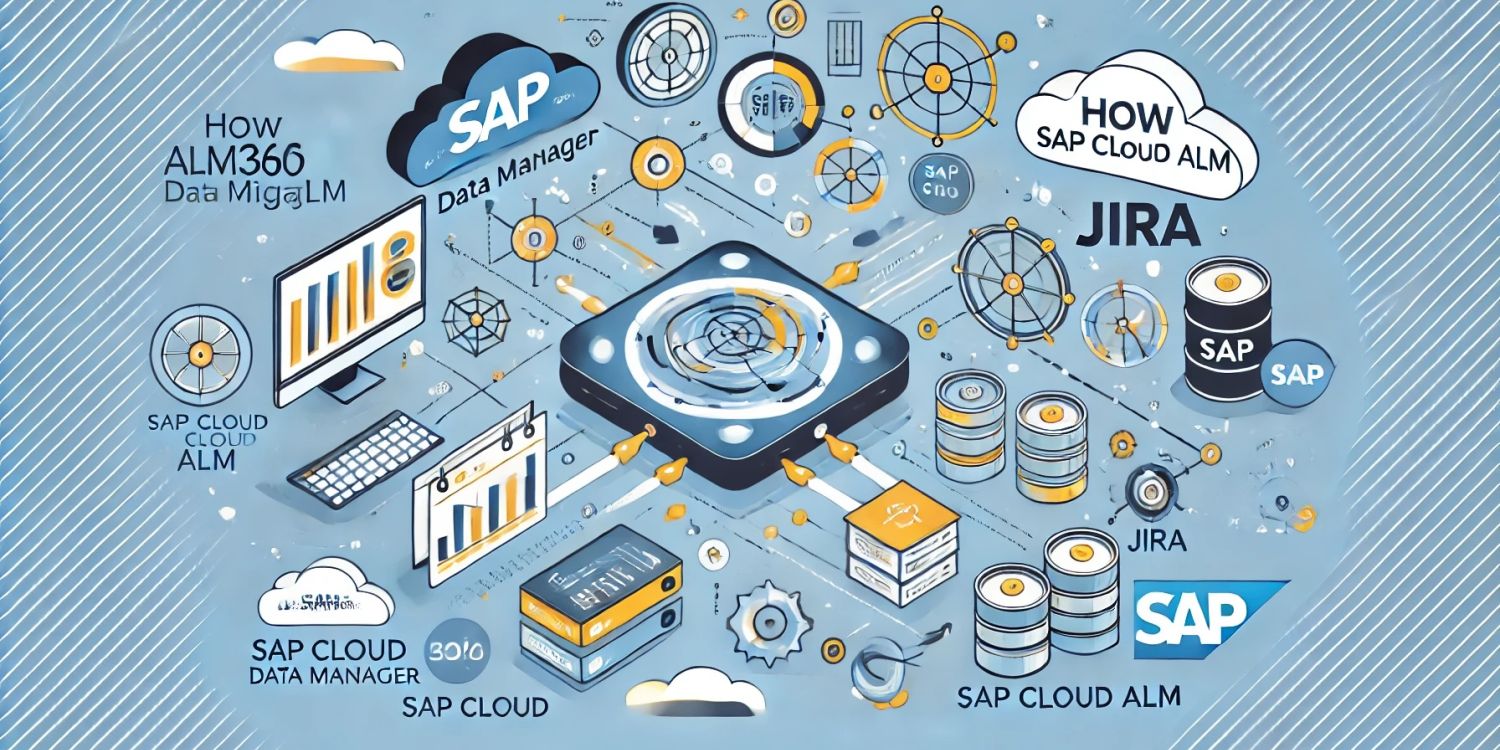
How alm360 Data Manager can help migrate to SAP Cloud ALM
In an earlier post, we introduced the upcoming alm360 Data Manager. Now, let’s take a closer look at how this tool can simplify migrating to SAP Cloud ALM, automating much of the heavy lifting when it comes to transferring entities. Once your planning phase is complete and you’re ready to move into implementation,theData Manager will take care of the actual task of transferring entities from your existing system to SAP Cloud ALM.
How Does Migration Work with alm360 Data Manager?
Once you’ve connected all the required systems, the migration process is smooth and straightforward. Here are the basic steps to get your migration underway:
- Connect Your Source System to alm360 Data Manager
Whether you’re migrating from an external ALM tool (like Atlassian Jira) or a different legacy platform, the first step is to establish a connection between your source system and alm360 Data Manager. This enables the tool to access the data and entities that need to be migrated.
- Connect SAP Cloud ALM to alm360 Data Manager
Similarly, connect SAP Cloud ALM to the alm360 Data Manager, ensuring a secure and reliable transfer environment between your source and destination.
- Navigate to the Import Tab
Once both systems are connected, head over to the Import tab within alm360 Data Manager, where you can start setting up the transfer process.
- Map Source Fields to Destination Fields
Using an intuitive dropdown interface, map the fields from your source system to the corresponding fields in SAP Cloud ALM. The field mapping functionality ensures that the data is accurately aligned between systems, preventing errors and misconfigurations during migration.
- Confirm the Mapping and Begin Import
After reviewing your field mappings, confirm the setup and initiate the import. alm360 Data Manager will handle the rest, ensuring a smooth and reliable transfer of all entities from the source platform to SAP Cloud ALM.
Keeping Data in Sync Throughout the Process
One key feature of alm360 Data Manager is its ability to keep entities in sync across both systems during and after the migration. If you still have ongoing processes in your current system and aren’t ready to completely transition to SAP Cloud ALM, the Data Manager can keep both platforms aligned. Any updates made in the original system will automatically be reflected in SAP Cloud ALM, allowing you to work in parallel until you’re ready to make the full switch.
This synchronization capability reduces the risk of data discrepancies and ensures that your teams can work with confidence during the transition.
Does this sound like the kind of efficiency boost your team could benefit from? Reach out to us today, and let’s discuss how we can help you streamline your migration to SAP Cloud ALM and take your project management to the next level.